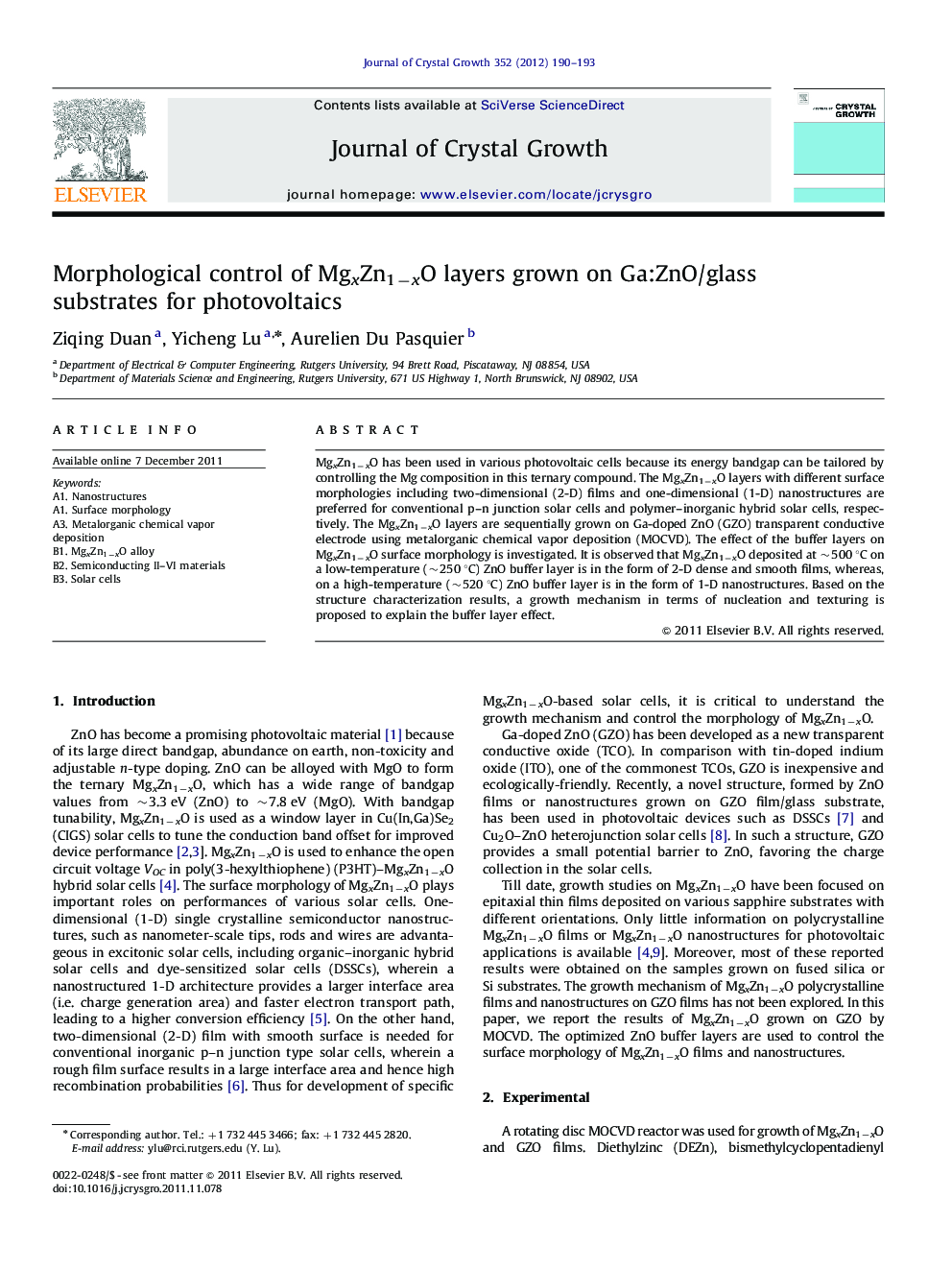| Article ID | Journal | Published Year | Pages | File Type |
|---|---|---|---|---|
| 1791789 | Journal of Crystal Growth | 2012 | 4 Pages |
MgxZn1−xO has been used in various photovoltaic cells because its energy bandgap can be tailored by controlling the Mg composition in this ternary compound. The MgxZn1−xO layers with different surface morphologies including two-dimensional (2-D) films and one-dimensional (1-D) nanostructures are preferred for conventional p–n junction solar cells and polymer–inorganic hybrid solar cells, respectively. The MgxZn1−xO layers are sequentially grown on Ga-doped ZnO (GZO) transparent conductive electrode using metalorganic chemical vapor deposition (MOCVD). The effect of the buffer layers on MgxZn1−xO surface morphology is investigated. It is observed that MgxZn1−xO deposited at ∼500 °C on a low-temperature (∼250 °C) ZnO buffer layer is in the form of 2-D dense and smooth films, whereas, on a high-temperature (∼520 °C) ZnO buffer layer is in the form of 1-D nanostructures. Based on the structure characterization results, a growth mechanism in terms of nucleation and texturing is proposed to explain the buffer layer effect.
► In this study we sequentially grow MgxZn1−xO layers on GZO films by MOCVD. ► We investigate the effect of the buffer layers on MgxZn1−xO surface morphology. ► A low T ZnO buffer is helpful for the formation of MgxZn1−xO dense and smooth film. ► A high T ZnO buffer is beneficial for the growth of MgxZn1−xO nanostructures. ► A growth mechanism is proposed to explain the buffer layer effect.
